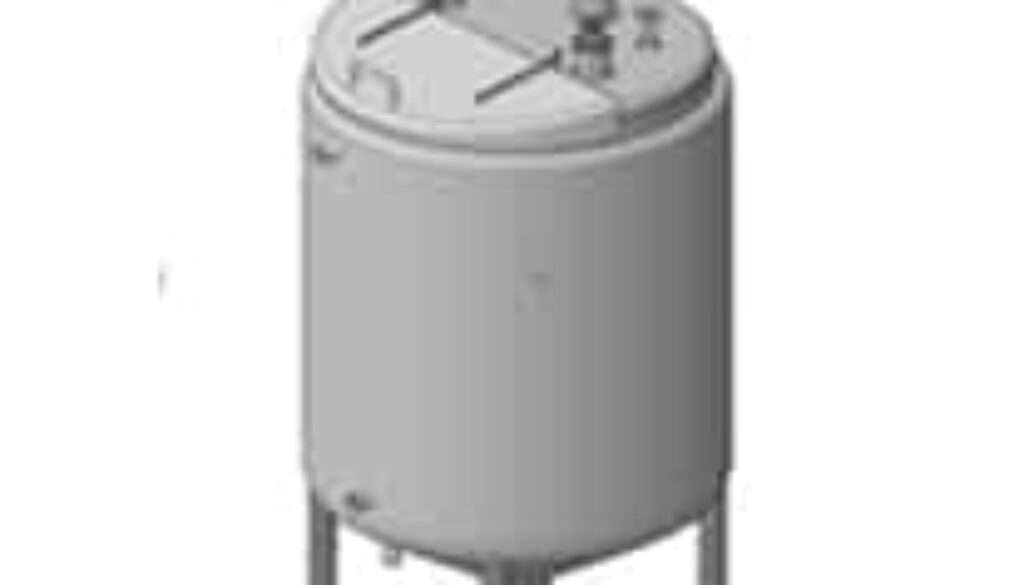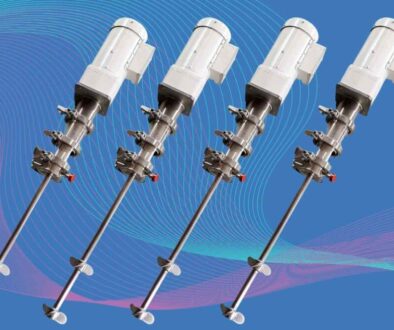Sanitary Mixers for Biopharma Blending
The sophistication of biopharmaceuticals is enormous, but the development of innovative biopharmaceutical products is often plagued by technological and operational challenges. The manufacturing capabilities required to reliably reproduce molecules at an industrial scale are enormous. While the mixing and blending required for biopharmaceutical formulation may appear straightforward – and have been undertaken for over a century – the sanitary features of mixers can make or break their long-term utility in the operations process. An agitator used on a mixing tank (blending system) must be designed and operated to provide the process results required, and have the documentation and ability to be properly cleaned per the in house procedure or SOP (typical cleaning is via CIP and/or SIP – clean in place and/or steam in place).
Sanitation is Critical for High-Quality Biopharmaceutical Products
Sterility and cleanability on blending equipment for drug makers is of course of the utmost importance, and several aspects of sanitation and relevant outcomes must comply with U.S. Food and Drug Administration (FDA) regulations. These regulations change in response to the needs of the industry and its stakeholders and tend to get stricter over time. The technology of mixers used in the food industry may not always differ significantly from mixing technology in the pharmaceutical and biotechnology industries. However, in the latter case, it is critical to have ultra-sanitary mixing equipment that is built specifically to meet the demands of pharmaceutical and biotechnology products. More recently, as food allergies have been on the rise, the risks associated with cross-contamination have increased the importance of sanitation in the food industry as well.
Sanitation Standards
The FDAs Current Good Manufacturing Practice regulations (CGMPs) helps to ensure that biopharmaceuticals are not only high-quality products but that they are also free of contamination. Sterility is vital for any associated drug, including its quality, purity, safety, strength, efficacy, or identity. Particularly with new viruses such as Covid-19 coronavirus pandemic, it shows the urgent importance of sterility in every way, shape, and form. Any processing equipment, including mixing and blending tanks and systems must be cleaned and sterilized accordingly.
Meetings Sanitation Requirements Can Be Time Consuming and Laborious
While sanitation has always been emphasized in biopharmaceutical industries, the process for sanitation has faced limitations and caused workflow bottlenecks for biopharmaceutical operations. For instance, production systems of the past have been cleaned manually, requiring time consuming and laborious processes, such as system disassembly, scrubbing, and rinsing. An added critical weakness of these systems has been the potential to introduce contamination and potentially damage the system.
Clean-in-Place Technology Helps to Ensure High-Quality and Efficient Blending
The use of clean-in-place (CIP) techniques – which is used extensively in the biotechnology and pharmaceutical industries, as well as in the food industry – offers a modern approach to mixing and blending that enables comprehensive cleaning without the need to disassemble the different pieces and sections of the equipment. CIP technology can help to maintain clean surfaces through the spraying or recirculating of fluids. These methods often employ spray balls that spray various cleansing and sanitizing liquids at high flow rates and at high temperatures.
Not only do CIP systems remove system fouling in a highly effective way, but they are also conducive to automation. These features associated with CIP technologies have made them readily adopted by leaders in biopharmaceutical manufacturing and food production.
CIP Strategies Add Value to Biopharmaceutical Processes Like Buffer and Media Prep
The CIP approach enhances quality and efficiency wherever cleaning and sanitation is required. For frequent or high batch processes, such as buffer preparation and media preparation, CIP is particularly valuable. Not only can this strategy increase cleaning quality and efficiency, but it can help ensure that the development of these batches is repeated in a uniform way and that each product is reproducible and scalable.
Mixer and Blending Tank Designs Must be CIP and SIP friendly
Any sanitary agitator, and blending vessel should be specified and designed to allow proper cleaning and sterilizing per GMP and BPE standards. Mixing tanks are generally fabricated in USP VI PP (polypropylene) or FDA PE (Polyethylene) materials, or stainless steel 316Lss grade, with polished surfaces <20ra and post fabrication passivation and electropolishing. all materials must be traceable and proper gmp documentation part of the mixer turnover package. often times these mixing tanks will be riboflavin cip tested to assure complete coverage in the vessel, and proper cleaning of all the agitator components including the mechanical>
Takeaway: Given the critical importance of sanitation for biopharmaceutical products and the immense labor that can be involved in ensuring sanitation standards are met, those producing these products need technologies that can achieve the highest levels of sanitation while enhancing the efficiency of the sanitation process. Clean-in-place (CIP) technologies are an ideal way to meet these challenges and produce high-quality, reliable products without regularly replacing or supplementing equipment.




